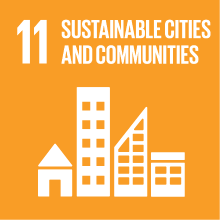ARCHEOLOGY AND THE CULTURES OF GANDHARA AND THE SILK ROADS
- Academic year
- 2022/2023 Syllabus of previous years
- Official course title
- ARCHEOLOGIA E CULTURE DEL GANDHARA E DELLE VIE DELLA SETA
- Course code
- LM2640 (AF:395890 AR:211904)
- Modality
- On campus classes
- ECTS credits
- 6
- Degree level
- Master's Degree Programme (DM270)
- Educational sector code
- L-OR/16
- Period
- 2nd Semester
- Course year
- 1
- Where
- VENEZIA
- Moodle
- Go to Moodle page
Contribution of the course to the overall degree programme goals
The course wished to introduce the students to the problems of archaeology, fine art and material culture from Afghanistan to South and Central Asia from BCE 600 to 1000 CE. The course will have a focus on the early-historic to post-Kushan phases of the Gandharan region (modern Pakistan) (c. 150 BCE- 650 CE).
The course pairs well with LM2645 and LM2580.
In the coming academic year 2022/23, the LM course FM054, History and Civilisation of the Greeks (DSU, Prof. C. Antonetti), will focus on Eastern Hellenism, i.e. the history of the Greek presence in Central Asia and India. In order to provide students with the necessary background, the course will be closely interconnected with that of LM2640, Archaeology and Cultures of Gandhara and the Silk Roads. The collaboration will also result in a study trip to Pakistan, at the Italian Archaeological Mission, in the late spring of 2023, in which selected students who have taken both courses will participate.
Expected learning outcomes
A good understanding of the thematics discussed and related methodologies.
Pre-requirements
Contents
General chronologies for the period considered in a broad sense (approx. 600 BC to 1000 AD).
Topics in the archaeology of religions.1: Buddhist shrines.
The construction of a stupa: from the quarries to the elevation. organisation of the construction site, the workers, the client.
Case study 1: Saidu Sharif I
Case study 2: Amluk-dara
Topics in archaeology of religions.2: dynastic sanctuaries.
Case study 1: Surkh Kotal
Case study 2: Mat (Mathura)
Topics in archaeology of religions.3: the Shahi temples
Case study 1: Barikot, Zalam-kot
Ancient economy: agricultural production and the role of Buddhist monasteries
Case study 1: The double-crop regions
Case study 2: The archaeology of wine production in Gandhara
Themes in the history of Gandharan art: models, contamination and emulation between India and the Mediterranean
Case study: The Frieze of the Master of Saidu
Referral texts
Other texts are the following:
1) Ciro Lo Muzio, Archeologia dell’Asia Centrale preislamica. Mondadori Università, Milano, 2017 (ISBN: 9788861844124): selected Chapters [BAUM: ARCHEO (931 ASIA 125)].
2a) Pierfrancesco Callieri, Anna Filigenzi (a cura di) Il Maestro di Saidu Sharif. Alle origini dell’arte del Gandhara. MNAOr/IsIAO 2002 (in italiano) (no ISBN): Chapters 3, 4 and 5.
or (in English)
2b) Domenico Faccenna, Pierfrancesco Callieri, Anna Filigenzi, “At the origin of Gandharan art. The contribution of the IsIAO Italian Archaeological Mission in the Swat Valley Pakistan”, Ancient Civilizations 9, 3-4. Brill, Leiden, 2003 (English short version) (ISSN: 0929-077X; 1570-0577).
or (in Chinese)
2c) Pierfrancesco Callieri, Anna Filigenzi, Luca M. Olivieri (a cura di), At the origin of Gandharan art, Shanghai Classics, Shanghai 2015 (Chinese edition) (ISBN: 9787532577866).
3) Cinzia Pieruccini, L'arte dell'India.1 Dalle origini ai grandi templi medievali, Einaudi, Torino 2020 (ISBN: 9788806245955): Chapters II.1, 7-8, III.3-4, IV.1-2, , VI.4
4) Luca M. Olivieri, Stoneyards and Artists in Gandhara. The Buddhist Stupa of Saidu Sharif I, Swat (c. 50 CE) https://edizionicafoscari.unive.it/it/edizioni4/libri/978-88-6969-577-3/
During classes the most important chapter of each text will be indicated.
Assessment methods
Individual material cataloguing and study exercises will be conducted on materials uploaded on the ICherish teaching platform.
Before the exam, the candidate will present a short (about 5000 words in English or Italian) research essay on a topic selected by the candidate that references and cites the texts we have studied.
Type of exam
Teaching methods
The last part of every class will be devoted to actively discuss the main topics.
Individual material cataloguing and study exercises will be conducted on materials uploaded on the ICherish teaching platform.
A short written summary will be requested every 4 lessons.
Before the exam, the candidate will present a short (about 3000 words in English or Italian) research essay on a topic selected by the candidate that references and cites the texts we have studied. Students are encouraged to work on the paper beforehand but cannot use their notes during the exam.
Teaching language
Further information
2030 Agenda for Sustainable Development Goals
This subject deals with topics related to the macro-area "Cities, infrastructure and social capital" and contributes to the achievement of one or more goals of U. N. Agenda for Sustainable Development


